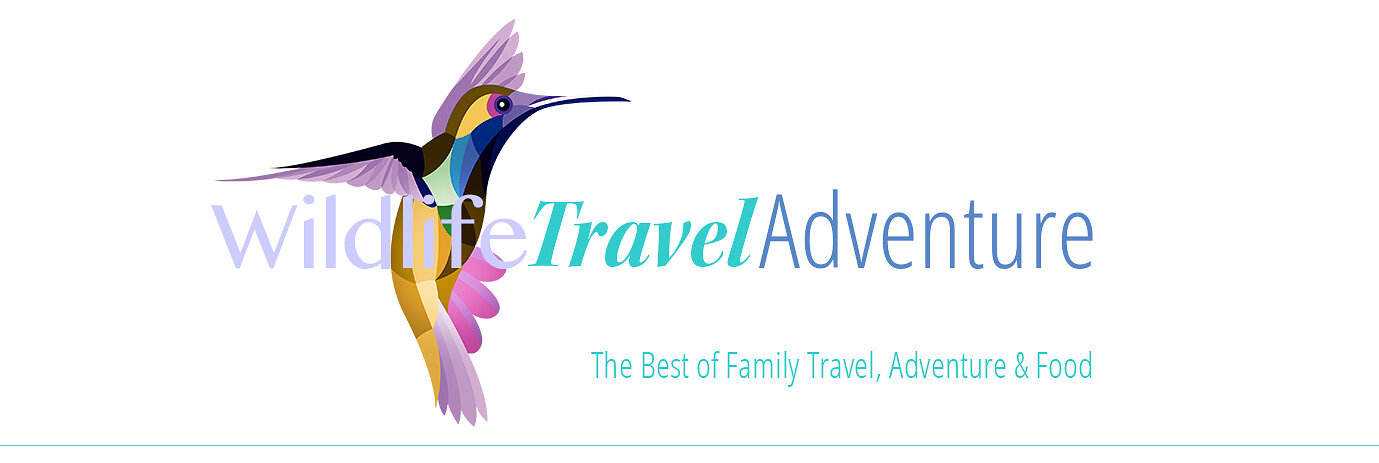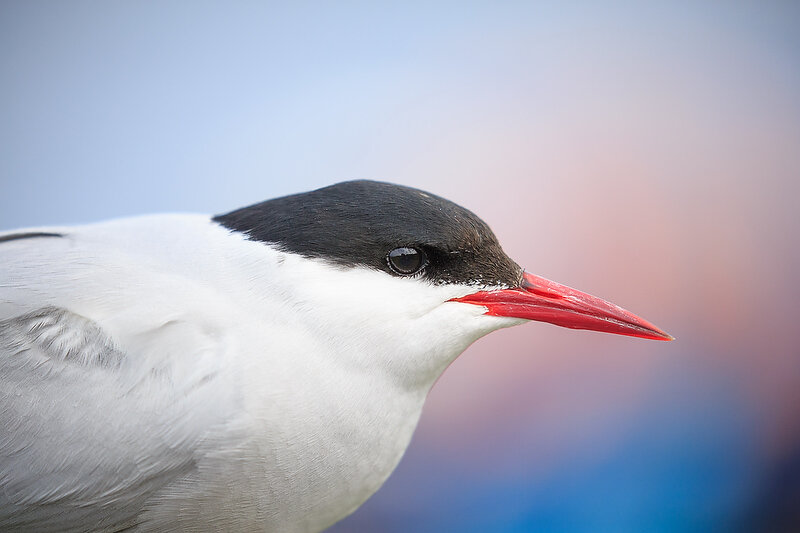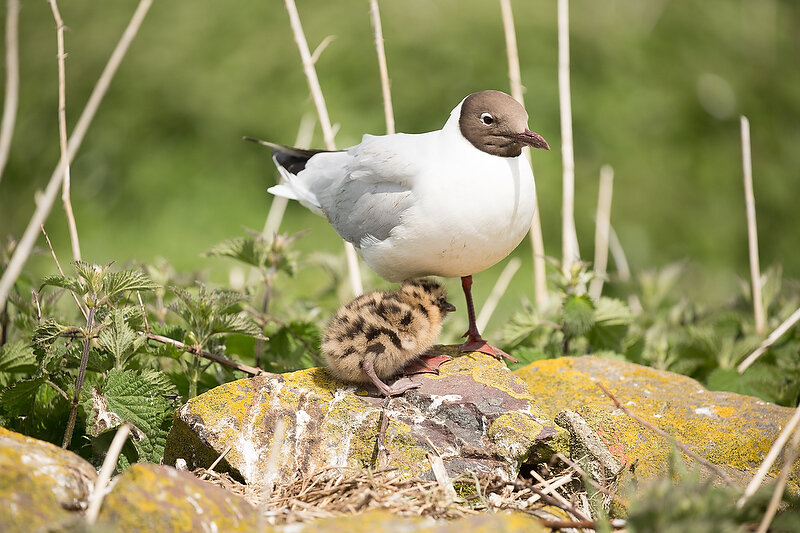Perfectly Puffin
Every year thousands of puffins land on a select few islands and we have three short months to see them before they go out to sea again for the rest of the year.
We took our four children to the Farne Islands off the coast of Northumberland for their annual puffin pilgrimage.
There’s a storm brewing. The sea has turned a menacing petrol blue.
‘I’m sorry we have to cancel,’ says the captain. ‘You won’t enjoy it, there’s 47mph winds predicted. You don’t want to get thrown around on a boat out there.’
But that’s where he was wrong. My husband Stuart and my children don’t care about getting thrown around. They do care, however, about seeing the puffins.The puffins have been elusive to us this year. We were in Scotland hoping to sail from Anstruther, in Fife, to the Isle Of May to visit them, but bad weather kept cancelling the boat.
Undeterred, we drove to Northumberland to try our luck in the Farne Islands, a seabird nirvana that we’d always intended to visit.
Stuart was not going to take no for an answer and frantically he called other puffin tours. At
office in Bamburgh, his granddaughter assured us it would be uncomfortable in the swell but perfectly safe.
Were we up for it?
‘Yessssss,’ shouted all four children. They all have fantastic sea legs.
As we were waiting on the dock, a wide but low boat pulled up and I did have second thoughts.
In the distance
Grace Darling’s lighthouse loomed as a stark reminder to respect the power of the sea, even though we could clearly see the island and it seemed like such a short hop across.
The story of how that brave young girl went on a rowing boat in a terrible storm fills me with awe and dread in equal parts. It was right here on this stretch of sea that she and her father bravely rowed out into waves the size of mountains, to save the lives of nine people.
There were a few other families standing at the dock ready to brave the crossing and several hardened birders who like us were determined to see the puffins.
As we sailed out of the harbour the boat rocked and tossed us around. Waves splashed over, soaking us. But the passengers were all in high spirits, excited to be seeing the puffins and embraced this as part of the adventure.
The children didn’t care, they cheered each time a wave soaked us.
The rough sea was forgotten as we stopped by some curious seals, who rather than dive in fear of human interaction, just stared as we stared back.
More and more kept popping their heads up and simply stared. Their conical faces and bewitching large eyes, still, in the rolling sea.
Our boat sat there for a while, it was the best seal watching I’ve experienced in the UK, until my two-year-old daughter Summer delightedly started bouncing up and down, shouting ‘Pufflings, I see Pufflings.’
The birders on the boat chuckled, as pufflings is the name given to baby puffins.
As the boat got closer to Inner Farne Island the distinctive smell of guano, seabird poo, dominated our senses. The cliffs were splattered in white.
The squawk of the seabirds sounded very like my home at 4pm just before everyone is fed.
The kittiwakes called their distinctive cry, kitti waaake, kitti waaake, just in case you forgot their name.
The sky was full of swooping, soaring seabirds. Every bit of cliff face was covered. It was a mass of life.
The National Trust guides were at the dock to greet us. ‘Make sure you have your hats,’ they warned everyone.
Every birder had a hat on, some of the wiser had ski gloves. It may seem a little eccentric but as we set off up the path the arctic terns began their attack with spectacular enthusiasm.
Many had laid their eggs in nests on the ground right next to the path. One had even laid her eggs on the path. They were safely cordoned off with a blue rope and numbered pebbles, but of course that was no reassurance for the terns who made sure they swooped and attacked the heads of every person passing by.
Despite their rather persistent pecks, arctic terns are still one of my favourite birds.
Their delicate frame with white tail feathers make them look like angels when they are hovering. But these are tough little birds with the longest migration of any animal, and you have to respect a bird that can make grown men and women run away.
It was almost comical to see everyone running the gauntlet past these birds, until I had been pecked once too often and we ran too.
The children led the way taking the path to the right up towards steep cliffs and rocky slabs. Nesting right on the rocks right beside the path were the shags.
A mother sat on top of her nest, protecting her brood. her black feathers shone with an iridescent green, and her beautiful black eye watched carefully as we all admired her nest of seaweed and twigs cemented with guano.
Then one of the tiny chicks wriggled out from under her wing and she curled her neck around and opened her beak wide and the chick seemed to force it’s head right inside as if about to be swallowed.
‘Oh no,’ shouted Sissi our four-year-old. ‘The Mummy is eating her baby.’ And it certainly looked like it. Fortunately the warden was there to explain that the mother keeps food in her gullet and the chick has to reach inside to get it.
Sissi though reassured was still rather disturbed. Emil our seven-year-old, was fascinated. We’ve never been just centimetres from a shag feeding her chick, it felt such a privilege.
But however fascinating, it was the puffins we really wanted to see. We bravely took the path back past the terns to a field of puffins.
There were puffins everywhere. They shuffled about importantly above the warren of holes, sharing beak rubs, waddling, looking about, some poked their heads out ready to fly out to sea to get sand eels to feed their young pufflings, some in the air sticking their hilarious red webbed feet out as they inelegantly came to land beaks dripping with rows of sand eels.
It was noisy, it was busy, it was fun.
But it’s not an easy life here for the puffins. Gangs of black headed gulls, swaggered around and attacked any puffin carrying sand eels as they came in to land.
They chased them, pecking. It looked alarming.
At first we thought they wanted to eat the puffins, but their sand eels were the target. The gulls simply wanted to steal their food.
But the puffins were great deceivers, they would appear to be going towards one hole then suddenly change direction and do a daring land scuttling dive into their burrows.
The surprising thing was the gulls didn’t succeed that often.
The main problem with the strategy of these big bullies was they would gang up sometimes three at a time on a puffin. But rather than work as a team they were out for themselves and got under each others feet with much frustrated sqwarking, so the puffin often got away despite their huge size.
When the puffin re emerged from its burrow with no food the gulls ignored it.
I sat on the path with Summer on my knee and Sissi huddled beside me to protect them from the wind and we watched this spectacle.
Sissi simply wouldn’t stand by and watch this happen.
She tried to go under the blue rope, her plan was to jump over the delicate structure of holes made in the peaty soil and chase the gulls away for them. I think she would have quite happily done that for the entire breeding season.
It took a lot of persuasion, and thankfully, finding a supply of Manchego cheese and some tasty oat cakes in my bag to distract her from this cause. Trying to explain to a four year old that she would make the burrows crumble isn’t an easy thing. But with the cheese having placated her slightly, she satisfied herself by sitting guard as close to the rope as she could get with Summer by her side shouting, ‘We love puffins, we hate gulls.’ And roaring as the gulls tried to attack the puffins.
They refused to move for almost an hour seeing it as their job to guard the puffins. And the gulls seemed rather bemused by this torrent of unusual human noise. Sissi and Summer contented themselves with the thought that they had scared the gulls.
Stuart and about six other photographers were slightly further up the path, all with huge camera lenses focused on one puffin, who had clearly elected himself as the puffin representative and stood patiently just feet away from them turning to one side, then the other, allowing the photographers to capture every angle of his elegance while the others all got on busily around him with their tasks.
My two older children Yasmine, 9, and Emil, 7, were captivated by a puffin who they watched fly over their heads just centimetres away from them and into a hole right by their feet next to the path.
He disappeared for a few minutes and they sat and waited patiently. Then he popped his head out and just sat with his beautiful coloured beak shinning like a rainbow out of the dark burrow. They were thrilled and crouched down quietly beside him taking pictures.
We could have sat on the path in this field of puffins until dark but we had to get the boat back.
As we walked around the path past a rock with about a hundred puffins, on top of a stone wall in a line were six nests all with a black headed gull sitting atop. Peeking out from under the white feathers was the cutest ball of beige with black spots. If there were ever a model for the cutest chick, this would surely be it. These chicks, of course, belonged to the black headed gull.
Sissi and Summer took about a minute of consultation, and then decided that even though the gulls were wrong to steal food from the hard working puffins, anything that had a chick this sweet had to be forgiven.
We went back to the boat elated, not so worried about the swooping terns, their pecks were definitely worth it.
Where?
To visit the Farne Islands:
Boats go from Seahouses, Northumberland
Billy Shiel Farne Islands Boat Trips 01665 720308 / 01665 720316Golden Gate 07904 800590 /07904749128Serenity 01665 721667/ 01665 720760http://www.nationaltrust.org.uk/farne-islands/
Other breeding colonies around the UK include
RSPB’S Bempton Cliffs, N Yorks
Isle of May, off the coast of Fife
Shetland and Orkney Islands
Where we stayed
at Seahouses / 0191 580 3610
When?
Adults arrive at the breeding colonies in March and April and leave by mid-August

















